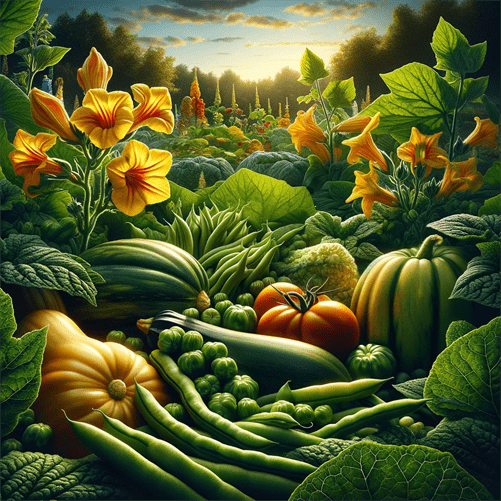As the midsummer sun blazes overhead, the gardening landscape undergoes a significant transition. This period, stretching from July through August, offers both challenges and opportunities for vegetable gardeners.
Understanding the nuances of mid to late-summer gardening is crucial for maintaining a vibrant and productive garden. This comprehensive guide delves into effective strategies, from selecting the right crops to managing the sweltering heat, to ensure a successful harvest during these warmer months.
Understanding the Mid to Late Summer Climate
Mid to late summer is characterized by long, hot days and often minimal rainfall. This climate can stress plants but also accelerate the growth of certain vegetables.
Gardeners must adapt their practices to contend with these conditions while maintaining the health and productivity of their gardens.
Choosing Suitable Vegetables for Late Planting
The key to a successful mid to late-summer garden lies in selecting the right vegetables. Fast-maturing crops like bush beans, zucchini, and cucumbers are ideal for early to mid-summer planting.
As the season progresses, the focus shifts to cool-weather crops like kale, radishes, and turnips, which can tolerate the diminishing heat as they mature into the fall.
Soil Care and Nutrient Management
During the peak of summer, soil can quickly dry out and become nutrient-depleted.
To combat this, regular incorporation of organic matter such as compost or aged manure is vital. This practice not only enriches the soil but also improves its water retention capacity.
Additionally, a layer of mulch can help preserve soil moisture and regulate temperature, providing a more stable growing environment for your vegetables.
Watering Techniques for Optimal Growth
Efficient watering is crucial in the heat of mid to late summer. Deep, infrequent watering encourages strong root development and helps plants withstand dry conditions.
The use of soaker hoses or drip irrigation systems can deliver water directly to the roots, minimizing waste and evaporation. Watering early in the morning or late in the evening also reduces water loss due to evaporation.
Pest and Disease Control in High-Heat
Pests and diseases can proliferate in the warm summer months. Regular monitoring of your garden is essential for early detection and control.
Employing organic pest control methods, such as introducing beneficial insects or using natural insecticides, can effectively manage pest populations without harming your garden’s ecosystem.
Succession Planting for Continuous Harvest
To maximize your garden’s output, implement succession planting. This involves planting new crops as others are harvested, ensuring a continuous supply of fresh vegetables throughout the season.
Plan your garden layout and planting schedule to accommodate the growth cycles of different crops, allowing for an ongoing harvest.
Fertilization for Healthy Plants
Mid to late summer is also a time to reassess your fertilization strategy. Organic fertilizers, such as compost tea or fish emulsion, can provide essential nutrients to your growing plants.
Be mindful of over-fertilization, especially with nitrogen-rich formulas, which can promote leaf growth at the expense of fruit production.
Heat Management and Plant Protection
Protecting your plants from excessive heat is vital. Employ shade cloths or temporary coverings during the hottest parts of the day to prevent heat stress.
Ensure adequate air circulation around your plants to reduce the risk of fungal diseases, which can thrive in hot, humid conditions.
Harvesting Techniques for Peak Flavor

Harvesting your vegetables at the right time is crucial for the best flavor and nutritional content. Regular harvesting also encourages plants to produce more fruit, extending your garden’s productivity.
Familiarize yourself with the signs of ripeness for each vegetable type to ensure you’re picking them at their peak.
Preparing Your Garden for Fall
As late summer progresses, start preparing your garden for the cooler months.
Begin planting fall crops, and consider establishing cover crops to replenish your soil’s nutrients. This is also an ideal time to start saving seeds from your summer crops for next year’s planting.
Gardening in Changing Climates
Climate change brings new challenges to mid to late-summer gardening, with more frequent heatwaves and unpredictable weather patterns. Adapting your gardening practices to these changes is crucial for continued success.
Stay informed about local climate trends and adjust your gardening strategies accordingly.
Celebrating the Summer Garden
Mid to late summer offers a unique and rewarding gardening experience. With the right approach, you can overcome the challenges of the season and enjoy a fruitful harvest.
Embrace the warmth and abundance of these months, and watch as your garden becomes a testament to your hard work and dedication.














